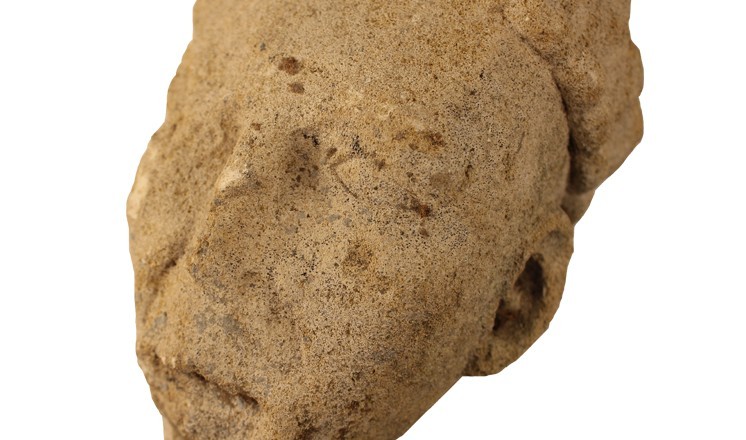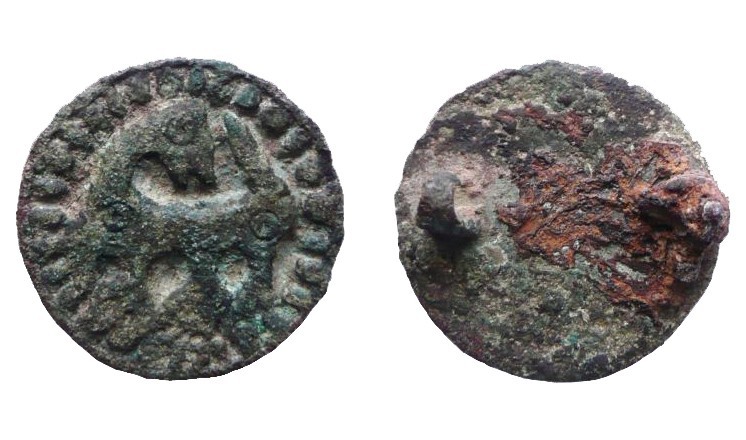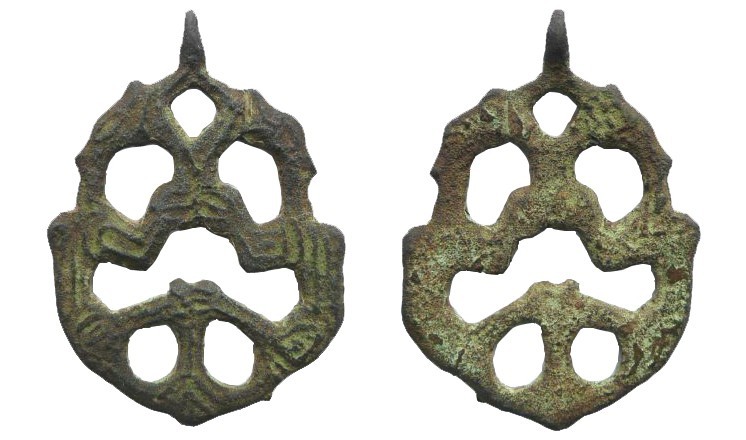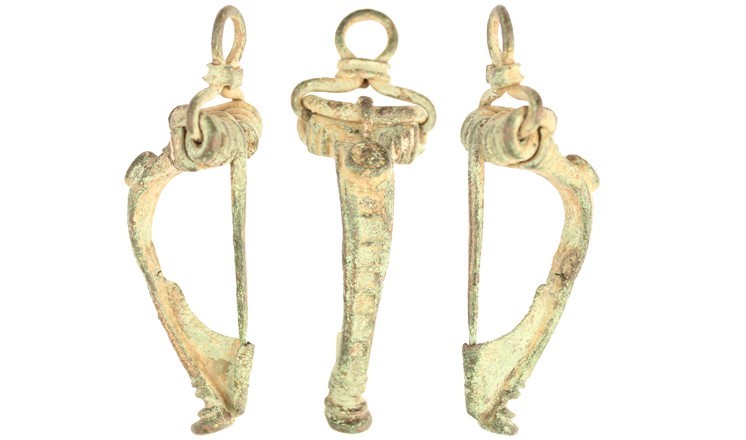A donation-full Easter!
RSS FeedThe archaeological collections at the museum are continually growing, both through the products of organised archaeological fieldwork and through finds made by the general public. This latter category encompasses a great variety of finds, from items unexpectedly encountered while gardening or dog walking through to items discovered by metal detector users systematically searching for artefacts. The museum is always grateful when such finds are offered to the museum for sale or donation, and we were delighted that during Easter a range of fantastic finds were donated to the museum by a number of kind individuals.
The first item is a carved Medieval stone head from Calceby, probably originally associated with the ruinous church there. Although slightly worn, the quality of the carving shines through, and this characterful head most likely once adorned a moulding around a doorway. Although the bottom of the head is worn, it appears that he might have been putting his fingers in his mouth to make a funny face!
The second item is a beautiful copper alloy Anglo Saxon brooch, dating to the 10th Century and found at South Somercotes. The striking image of a beast sits in the centre, its head bending back over its body, and its broad paws blending into the ring of pellets that run around the edge of the brooch. The reverse of the broch shows that it is missing its pin, but still has the catchplate and has iron staining showing where the pin once was.
The third item was donated by the same finder as the Anglo Saxon brooch and found in the same area, at Skidbrooke. This item is slightly later in date, the 9th or 10th Centuries, and is of Anglo Scandinavian manufacture. It is a harness pendant - originally hanging as decoration from a horse's harness. Although this item looks simple, look again and you will see two lean beasts side by side, with their jaws gaping. Horse harness pendants of this date are not common finds anywhere in Britain, and no exact parallels have yet been found for this example. It is therefore an extremely important find and one that the museum is particularly pleased to be able to add to the public county collections.
The fourth item is the oldest - a bronze Roman brooch of a type known as a 'headstud brooch'. These date to the 2nd Century AD. This complete and lovely example was discovered in a garden in the north of Lincoln, outside of the Roman city walls, but in an area rich in archaeology, close to where Roman buildings and burials have been discovered in the past. The brooch was kindly donated to the museum in memory of its finder, Mr John Anthony Taylor.
If you have found something of interest that you would like to have identified, or that you would like to discuss donating or selling to the museum, see the relevant pages in the About Us section of the website.
Comments
There aren’t any comments for this blog yet




